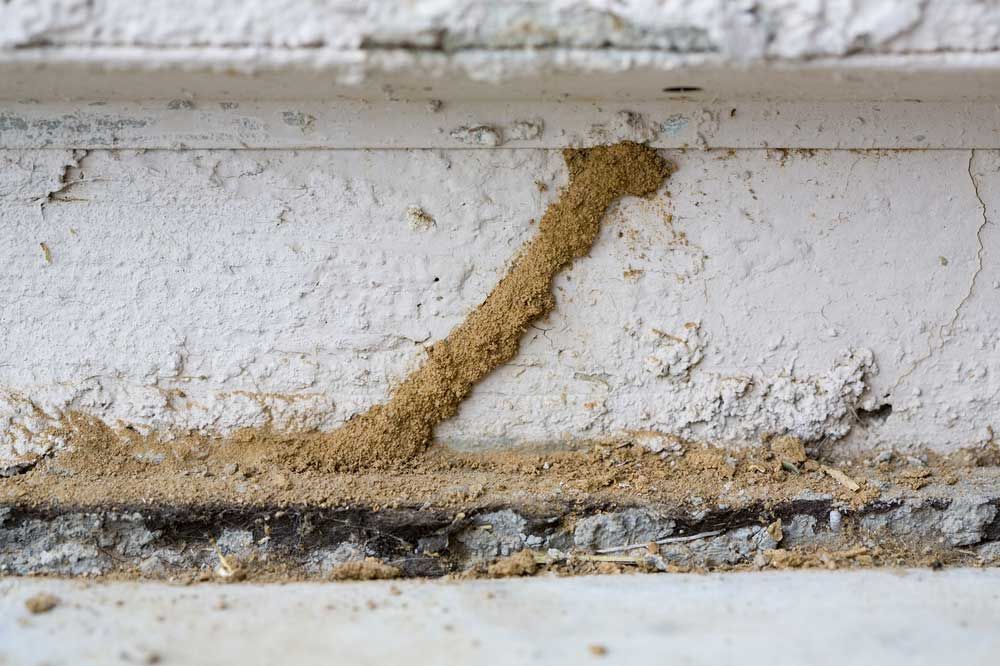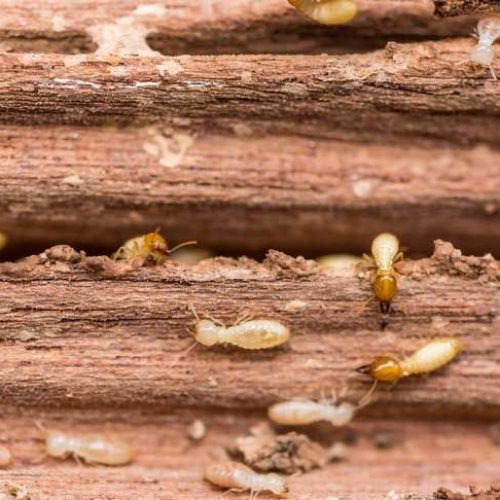Winning the War Against Termites
There’s an ancient saying that goes something like this: “Chains of gold are stronger than chains of iron,” which when translated to our modern context, could mean that early knowledge is our most formidable defense against unforeseen foes. With termite season lurking around the corner, homeowners and property managers need to know the signs of these ‘silent destroyers’. What you may not realize is that termites are not picky – they’ll set up a veritable buffet in any home they find suitable: new construction is just as likely as older homes to have those little wood-destroyers appear. Rest assured, this detailed termite guide will empower you with the knowledge to identify, prevent, and eliminate these winged pests from your home.
Beneath the Earth’s crust, termite colonies, numbering in the millions, are silently gathering in the Missouri soil. These tiny hidden foes can wreak havoc on your home’s foundations. Here’s what you need to know.
How Termites Work
Understanding your enemy is the first step in defeating it. Termites are not solo scavengers but rather, are a piece of a fairly sophisticated insect world known for their social structure, similar to that of ants and bees. Classified into three types – subterranean, drywood, and dampwood, their main aim is to feed the colony’s insatiable hunger for cellulose – the compound abundant in wood and plant matter.
Subterranean termites that predominantly plague Missouri homes erect swanky underground nests interconnected by mud tubes – the highways that lead to your pantry. To the termite, your home is merely another cellulose-rich smorgasbord. This is not a takeover you can afford to ignore or delay – an unchecked termite colony devours on average the equivalent of 5-15 feet of a 2×4 beam in a single year!
Their damage is chillingly clandestine; often, leaving a home’s foundation weakened with little visible signs. Once you understand their tactics, you’ll spot the subtle signs that reveal their presence.
The Subtle Signs
With a keen eye, your home can be safeguarded by your own vigilance, preventing termites from causing harm before it begins. Three main signs should trigger immediate concern:
- The Telltale Mud Tubes:
These dusty paths reveal the termite’s modus operandi – dirt-colored tunnels that meander along your foundation. - The Sound of Desolation:
If your once solid wood now resounds with a hollow echo, it’s likely the result of the termite’s work from within. - Winged Exiles:
The emergence of termite swarmers indicates a colony in the midst of expansion, poised to dispatch its members for further growth.

Treated Wood and Mulch Management
Incorporating treated wood and managing mulch around your home’s perimeter emerge as critical strategies.
Treated wood, often soaked with chemicals that repel termites, is a formidable barrier against these invaders. When constructing or renovating, opting for treated wood for decks, fencing, and even foundational supports can significantly reduce the buffet options for termites. This type of wood has undergone treatment to make it unpalatable or toxic to termites, hence deterring their advances. While treated wood is not infallible, it substantially lowers the risk of termite infestation and can be a worthy investment in the longevity of your property.
Mulch, while aesthetically pleasing and beneficial for plant growth, can inadvertently become a beacon for termites if not used judiciously. Mulch retains moisture, which attracts termites, creating an unintentional welcome mat around your home. To mitigate this risk without sacrificing your garden’s beauty, it’s advisable to maintain a safe distance between mulch and the foundational walls of your house. Ideally, a buffer zone of 18 inches ensures that moisture and potential termite colonies are kept at bay from your home’s foundation.
Substituting rock in landscaping over mulch, however, is the best option to help prevent termites and other pests.
Additionally, considering mulch alternatives such as rubber, gravel, or certain types of cedar can provide the aesthetic and horticultural benefits you desire minus the termite attraction. Through strategic use of treated wood in construction and careful management of mulch, homeowners can significantly fortify their homes against the silent destroyers lurking beneath.
Simple Steps for Home Protection
While having a professional inspect and treat your home for termites is crucial, there are simple steps you can take to help reduce the likelihood of an infestation. Here are four things you can do:
- Preserving Soil and Wood Integrity:
Avoid placing wooden posts directly into the ground; rather, use concrete bases for better longevity and protection. - Termite-proof Landscapes:
In the termite atlas, wood and soil are close friends. Keep these buddies apart to foil their plans. - Regular Home Inspections:
As you are outside, periodically walk around your house and look closely at your foundation. A simple flashlight and a keen eye can save you many a sleepless night.
While the DIY spirit is admirable, concerning the safety of your home, seeking professional assistance is priceless. Pest control experts can not only eliminate any current termite threats but also develop preventive strategies to avoid future infestations.
Going on the Offensive: Regular Inspections
While fortifying your home provides a robust defense, taking the battle to the termites with regular inspections and chemical treatments places you firmly on the offensive. Proactive measures are essential in the eternal struggle against these wood-devouring insects. Regular inspections by a professional pest control service can uncover hidden termite activity and risks that may not be visible to the untrained eye. Ideally, your home should undergo a thorough termite inspection at least once a year, especially if you live in areas prone to termite infestations, like Missouri.
Remember, the goal is not only to eliminate current threats but also to lay down a long-lasting gauntlet to protect your home’s future. By integrating regular inspections and professional treatments with our Sentricon Always Active Bait system into your termite defense strategy, you ensure that your home remains a stronghold yet hostile to the silent destroyers lurking beneath.
A Code for Caution
Every home tells a story, yet termites threaten to turn it into a cautionary tale that’s better prevented early on. Being aware, taking decisive action, and conducting annual inspections are crucial defenses against the relentless invasion of these winged pests. Knowledge is your strongest weapon in this ongoing battle. Procrastination only aids their destructive cause. Remain alert and well-informed, ensuring your home’s hidden foundation remains solid, untouched by the wood’s plunderers.



